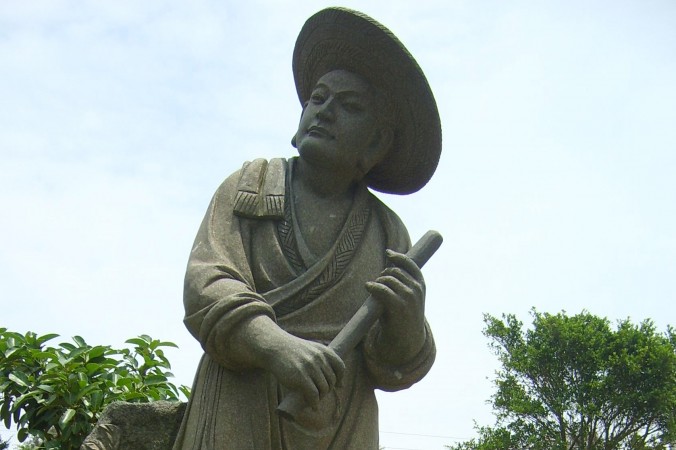This series by Epoch Times surveys the course of Chinese history, showing how key figures aided in the creation of China’s divinely inspired culture. This installment covers the reign of Shun, successor to Emperor Yao.
Featured image: “Filial Piety Moves the Heavens,” a statue in China of Emperor Shun. Credit: Dingar/Public Domain
(continued from Part 1)
Shun’s Work
To groom Shun for the throne, Emperor Yao gave him powers of administration over education and government, and tasked him with receiving regional dukes and princes. When meeting with the nobility, Shun took care to observe the proper ritual etiquette to maintain a solemn atmosphere.
Shun’s education was centered on having the young learn from the old. In the Book of Rites, it is recorded that he had residences built for elderly ministers and commoners near the granaries, where children would be gathered to pick up on their knowledge and wisdom. This system formed the basis for schools into the Western Zhou Dynasty of the 10th century B.C.
During this time, the Great Flood (introduced in the previous installment) continued to ravage China. In one perilous assignment, Yao dispatched Shun to tour the country and survey the flood. Travelling through the mountains, forests, rivers, and swamps was a difficult task made worse by torrential rains and violent storms. It was easy to go astray and encounter attacks by venomous snakes and man-eating beasts.
Shun led his men bravely. During a trek off the beaten path in a forest, they met a trio of tigers. The beasts roared at the sight of so many people, but Shun stepped out and spoke to them. “We are here by command of the emperor to survey the Great Flood and help rescue the people,” he said. “We did not expect to see you here. Please return to your cave and do not block the road.”
The tigers complied and left. Of Shun’s encounter, Yao said: “Either the gods have blessed him, or his sincerity is able to move all creatures.”
The Reign of Shun
But when Emperor Yao requested that Shun take the throne, he modestly turned down the offer. Yao, however, was aging and had Shun act as a regent with the assistance of the agricultural minister.
Soon, various auspicious signs convinced Shun that he should accept the throne.
Yao would hand imperial authority over to Shun in an elaborate and pious abdication process, as depicted in Han Dynasty texts. The emperor bathed, abstained from meat and wine, and built new altars. He led Shun and others in praying to the heavens and selected a propitious day to begin the events.
On the day of the ceremony, Yao and his subordinates made sacrificial offerings to the gods. He sank a piece of jade into a river, and upon this act, colorful light burst out of the waters. Auspicious clouds and vapors gathered in the mountains. A great wind blew and the river surged.
A dragon appeared from the rapids carrying something between its teeth. It approached the altar and released the item before returning to the deep. The gift was a map, recording the positions of the sun, moon, and stars, as well as the rivers and mountain ranges of the land. This was the “He Tu”—usually translated as the Yellow River Chart.
Two years passed, and Yao held a second ceremonial rite. This time, a giant tortoise appeared, carrying a great tome on its shell. The volume was made of tortoise shell and was engraved with red Chinese characters calling for the ascent of Shun to the throne. This was Luo Shu, the Inscription of Luo.
Having witnessed these miracles, Yao abdicated the throne and Shun was made emperor.
Emperor Shun’s rule was humane. Corporal punishment and cruel tortures were abolished except in the most irredeemable cases. Thus crimes that would once have resulted in amputation of the nose or feet, beheading, or penal tattooing were now punished by exile, fines, or whipping. This was in line with Shun’s emphasis on moral education—he believed that a society in which people were ashamed to commit crimes was superior to one where they were beaten into obedience.
Click here for the original article on Epoch Times, and read the next installment here.

